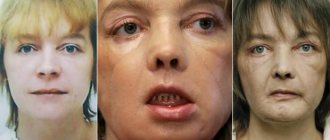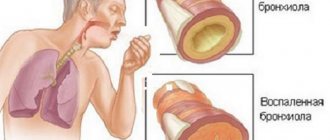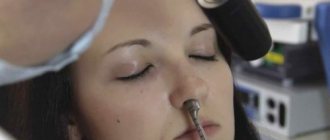Modern plastic surgery in many countries around the world places a clear emphasis on minimally invasive methods of correcting a person’s appearance: minimal labor and time costs, achieving maximum results, reducing possible pain to a minimum.
Rhinoplasty is quite difficult to imagine without the use of local or general anesthesia. It is quite difficult to compare the advantages and disadvantages of local and general anesthesia because these types of pain relief are used in different cases. Local anesthesia is necessary if a minor surgical intervention is planned, short in time, and also if there are certain contraindications to general anesthesia. In any case, the choice of anesthesia will depend on the complexity of rhinoplasty and the individual characteristics and wishes of the patient.
In this video you will see how anesthesia works. The video contains footage of a real operation (open rhinoplasty): Anesthesiologist: Konstantin Nikolaevich Donets, Surgeon: Edgar Kaminsky.
Anesthesia for rhinoplasty
The type of anesthesia used for rhinoplasty is determined by the characteristics of the operation and the preference of the surgeon. Three types of anesthesia for rhinoplasty are possible: local anesthesia, a combination of local anesthesia with sedation, and general anesthesia (anesthesia itself).
With local anesthesia, the nose and adjacent areas of the face become numb, the patient hears everything that is happening around him, and sometimes feels something; this may not necessarily be pain, but, for example, a feeling of pressure.
The second type of anesthesia for rhinoplasty involves a combination of local anesthesia with sedation; this is a more comfortable, but riskier option for pain relief for the patient.
The third type of anesthesia for rhinoplasty is general anesthesia. For rhinoplasty, this type of anesthesia is the safest (compared to the second option). In addition, anesthesia during rhinoplasty guarantees the absence of pain and any other sensations, for example, memories of the operation and anesthesia. When performing rhinoplasty under general anesthesia, the anesthesiologist performs tracheal intubation - inserts a special tube into the patient’s airways, which, on the one hand, ensures reliable breathing, and on the other hand, prevents blood from entering the airways and the development of pneumonia. This type of general anesthesia is called endotracheal anesthesia. In addition to ensuring safety, performing endotracheal anesthesia during rhinoplasty creates more comfortable working conditions for the surgeon.
Of course, of all existing types of anesthesia, local anesthesia is the safest option for pain relief during rhinoplasty. If local anesthesia for rhinoplasty is not possible, then endotracheal anesthesia would be the best choice.
It should be noted that when performing rhinoplasty under another type of general anesthesia - intravenous anesthesia - the patient will continue to breathe independently during the operation and his airway will not be protected, which, as with sedation, will pose a risk to his health.
Feeling after anesthesia
When the local anesthesia completely wears off and the patient regains sensitivity in the nasal area, pain gradually appears, up to severe pain. In such a situation, it is important to immediately tell the medical staff about such pain sensations in order to promptly relieve the condition with painkillers.
After the operation, the patient may experience severe pain, so it is necessary to be under observation
After surgery, under the influence of medicated sleep, the patient is monitored by an anesthesiologist until he fully awakens. When the operated patient wakes up, the doctor will ask a couple of simple questions to assess his well-being. In the first hours after anesthesia, you may experience dry mouth, dizziness, nausea, as well as chills and pain in the nose. Most often, the patient experiences drowsiness, which goes away within 24 hours.
Postoperative complications in surgery can develop both after medicinal sleep and local anesthesia. It all depends on the general condition, the individual characteristics of the patient’s body, and compliance with the recommendations of the surgeon and anesthesiologist.
(Ratings: 1 , average: 5.00 )
Anesthesia in plastic surgery
Plastic surgery Tags:
Yulia Titova:
Program “Plastic surgery with Dr. Zakharov.” It is my pleasure to introduce Anton Zakharov, doctor, plastic surgeon. I'm Yulia Titova, my co-host is Ekaterina Kryukova. Today we are discussing anesthesia for plastic surgery.
The first question I would like to ask you, Anton. Over the past decades, or within the framework of your practice, how has anesthesia changed, what have you experienced? Has it become qualitatively better? What special achievements has she achieved?
Anton Zakharov:
Anesthesia care is a topic that causes a lot of attention and excitement among our patients. This is an extremely important topic for any type of surgery, especially for plastic and aesthetic surgery, where the patient decides to take this step on his own, and does not become a hostage to the circumstances when he needs to undergo surgery. Without a doubt, the field of intensive care anesthesiology is developing very rapidly, like all other areas in medicine, and the types of benefits that are used in aesthetic surgery are also moving forward. Every year something new appears, but this new thing is part of system-wide phenomena in the general process. Of course, there is a general trend, because over time, operations become more complex, technologies become more complex, they require deeper types of anesthesia, more effective types. The duration of operations remains quite long. If earlier this was due, let’s say, to the slow implementation of technologies, now, with the advent of endoscopic techniques, with the advent of minimally invasive or more progressive techniques, the duration remains the same, because at the same time the volume increases. Let's put it this way: the acceleration of the process is compensated by an increase in volume.
Of course, the demands that an aesthetic surgeon places on the work of an anesthesiologist are very high. This specialist must be at the forefront of progress all the time, use the most modern devices, the most modern drugs and apply methods of patient management intraoperatively, because the surgeon and anesthesiologist work in tandem. The anesthesiologist maintains the correct pressure, correct humoral hemostasis, maintains the patient’s condition in such a way that the surgeon can work as efficiently as possible, as quickly as possible, and spend a minimum of time stopping diffuse bleeding that is not related to working with blood vessels, but is directly related to tissue bleeding. This also largely depends on the quality of the anesthesia. An anesthesiologist is a person who is generally responsible for the patient’s health state intraoperatively, for safety, for his life. Of course, it is important that this person is always qualified. Many aesthetic surgeons work in long-term teams with their anesthesiologists. Therefore, the importance of anesthesia in aesthetic surgery should not be underestimated in any case. On today's show we will try to highlight special aspects of this topic.
Yulia Titova:
Indeed, anesthesia is changing and improving. Any plastic surgery, one way or another, is accompanied by anesthesia; it cannot be avoided. But patients are still afraid of anesthesia, because there are a large number of myths that we still believe in unreasonably. Let’s say that general anesthesia can only be done once in a lifetime, and then this is already a huge threat to life. What fears do you face in your practice?
Anton Zakharov:
The topics of anesthesia care and fear of anesthesia are topical for any aesthetic surgeon. At appointments, the surgeon constantly answers questions related to anesthesia, fears, and myths. But it should be noted that in general, of course, it is very irrational to be afraid of anesthesia in its modern format. We are, naturally, talking about correctly provided anesthesiological care, with modern drugs using high-quality equipment. This is all very safe, very controlled, and the anesthesiologist’s task is to reduce any risks to practically zero. They may never be zero, but they are close to zero for the patient. If he is properly examined, prepared for the benefit, all contraindications are excluded, and his condition is absolutely controlled, then, of course, the chances of a complication occurring are minimal. Moreover, even if emergency situations develop, there are certain intraoperative complications associated with anesthesia, a qualified specialist at this moment has the maximum range of drugs and devices in order to cope with the situation.
Of course, we can say directly: the risks of anesthesia are minimal in the modern version, because the patient is healthy, examined, prepared, and everything comes down to very small values. Concerns regarding the duration of anesthesia or repeated use are unfounded. It is clear where this comes from: once upon a time, 50-60 years ago, the drugs that were used to put a person under anesthesia were very toxic and had a bunch of side effects. But, anesthesiology is one of the most dynamically developing branches in medicine.
Every year new drugs appear, more advanced, more selective, which makes it possible in the modern version to provide benefits with a minimal toxic load. Medicines that are used, for example, for inhalation anesthesia, such as xyloran, are used for patients, for example, in the burn department for dressing changes, which often last for several hours every day for six months. To talk about the harmfulness of a single or double anesthesia for a two-stage plastic surgery - these fears do not correspond to reality. As you can see, you can give a person the same allowance every day for six months, and even for such a period there are no proven objective facts of harm. This is being researched by large companies under the auspices of WHO, worldwide in different centers at the same time. So the myths have no basis.
The risks of anesthesia are minimal in the modern version.
Yulia Titova:
Should a person, an ordinary person, learn to understand drugs and medicines? Or rely on a doctor? Why am I asking: after all, new drugs are appearing, which perhaps one of the doctors will try to test on their patients. They are approved, but not yet proven in the plastic surgery community. Is it necessary to study the assortment that is now available in this area, or is it not necessary, you won’t understand anything there?
Anton Zakharov:
Without a doubt, the patient does not have the opportunity to understand the management of anesthesia; the patient’s level of competence does not allow this to be done, 100%. This is a completely meaningless discussion, devoid of any real factual basis. To really understand this, you need to have at least 6 years of medical education and, in addition to it, a course in anesthesiology and resuscitation, advanced training for several years in the form of residency. This is the only way to really understand what is happening. These are not so simple things. Forming some kind of abstract opinion based on unreliable facts is probably not very effective in terms of choice; only professionals should do this.
With regard to testing new drugs, everything sounds somewhat abstract from reality. Only those drugs that have already proven themselves over many years of use in centers that are specifically involved in testing new drugs are used in practice. There is never a situation where a doctor gets something new and decides to try it on a patient. In the format of modern medical practice, which is carried out in the legal field by professionals, this is an impossible situation.
Yulia Titova:
Everyone understands perfectly well that there are worse drugs and there are better ones, in any case, there is such a spectrum. Surely, there are drugs that are, let’s say, luxury level, like in cosmetics, which are definitely good. And there are drugs that are still, let’s say, under a question mark.
Anton Zakharov:
I agree. As in any line of medicines, there are more expensive, more, let’s say, proven drugs produced by those corporations that invented, licensed and tested, and there are, let’s say, simpler analogues.
But, it should be noted that anesthesiologists in aesthetic surgery do not have such a choice, because safety and quality are at the forefront in this segment of medical activity. I am not aware of any cases where teams engaged in this activity chose something cheaper in order to save money. I am not aware of such cases. They always try to take the best to get the most out of the maximum.
Ekaterina Kryukova:
May I ask about saving? You mentioned that you try not to do this. I heard that in plastic surgery they save on general anesthesia to please the local one because of the high cost of drugs and equipment, in particular. Can this be revealed somehow?
Anton Zakharov:
You are absolutely right, this is a very painful topic for discussion for our community. Because to provide a full-fledged anesthesiology service, very complex processing is required. We need anesthesia equipment, medical gases, expensive drugs themselves, narcotic analgesics, which are subject to certification, a certain format for use, purchase, storage, import, security. We need a staff of anesthesiologists and related specialists. A very large economic investment for any organization to maintain such a structure, it is not comparable in investment to a syringe of local anesthetic. But, without a doubt, local anesthesia cannot and cannot replace inhalation anesthesia in aesthetic surgery. In such cases, we are most often talking about minimally invasive interventions. The patient is at serious risk when attempting to perform a procedure that requires more advanced anesthetic care under local anesthesia.
All local anesthetics are quite toxic, all drugs are quite toxic, without exception, especially lidocaine can be dangerous in relation to the dose. No matter how paradoxical it may sound, the most difficult cases of harm to health or death of patients during aesthetic operations are associated precisely with an overdose of local anesthetics. When a patient who is pathologically afraid of anesthesia, instead of receiving professional advice from an anesthesiologist and surgeon who will explain the risks to him and make the operation as safe as possible, begins to purposefully look for people who will agree to perform even a large-scale intervention under local anesthesia. On the other side of the barricades are specialists who are trying to save money on everything, performing aesthetic surgeries without a sufficient level of equipment, under local anesthesia, in the absence of an intensive care unit, at the expense of safety. When they find each other, it sometimes ends in tragedy, because large doses, for example, of lidocaine have an antiarrhythmic effect in a certain concentration, and a proarrhythmic effect in an even higher concentration. Large doses of lidocaine can easily stop the heart, and in this case it will be simply impossible to restore cardiac activity in a clinical setting, where there is nothing, by and large, for this.
Here is a paradox: a person, afraid of anesthesia, dies from local anesthesia. This is a big problem. Everyone involved in the medical service organization industry, they are all struggling with these processes, doing everything possible to make aesthetic surgery as safe as possible. But there is also a great responsibility for the patient, enormous. If a patient goes to the clinic and is told: “Why do you need anesthesia? Under no circumstances, this is so dangerous, this is so harmful, we will do everything for you locally,” this is a control question for the patient. You can immediately understand that, most likely, the organization does not have any equipment to carry out processing, and, probably, it is not worth putting your life at risk, a real risk, not an ephemeral one.
Replacing general anesthesia with local anesthesia can result in tragedy.
Ekaterina Kryukova:
What operations definitely should not be done under local anesthesia? As an example, they take rhinoplasty or local liposuction.
Anton Zakharov:
To be honest, I believe that in general no operations should be performed under local anesthesia in aesthetic surgery, this is not necessary. This approach, of course, allows us to send the patient home earlier, or reduce the economic burden on him. But an aesthetic surgeon works for results. Not for the sake of doing something, for your own sake, whatever, but for the sake of getting a good aesthetic result. Even in a trivial situation, when a minor aesthetic operation, such as upper blepharoplasty, is performed under local anesthesia, it is very uncomfortable for the person. Maybe there is a pain-relieving effect from the anesthetic, but it is psychologically uncomfortable when there is a foreign instrument in the eye area, work is being done, plus bright light, plus an emotional experience. Naturally, systemic pressure rises and tissue bleeding increases significantly. In this case, the surgeon is forced to more actively stop the bleeding using a power tool. This increases thermal trauma to the tissue of the orbicularis oculi muscle, resulting in more severe scarring, worse aesthetic results and the appearance of scars. For what? For the sake of doing it this way? Again, an aesthetic surgeon works for the result, and everything works for this result - the quality of the operation, the quality of anesthesia, the quality of rehabilitation, the selection of patients, and, in general, everything connected with this.
The second important aspect is the increasing complexity of aesthetic surgery in the general trend. Minor isolated manipulations, which are potentially feasible under local anesthesia, practically fade into the background. In the majority, the patient wants more significant compositional changes, which are no longer possible under local anesthesia. Therefore, I do not use local anesthesia in my practice. I perform all aesthetic surgeries under one form of general anesthesia or another, this ensures maximum comfort for the patient and maximum safety.
Yulia Titova:
Let's talk about general anesthesia and the types of general anesthesia and what operations each is intended for. Let's say intravenous. How does it go, how long can it keep the patient, so to speak, in the dark, and gives the doctor the opportunity to complete the operation? What are the time limits?
Anton Zakharov:
There are many different types of intravenous anesthesia, but, in general, intravenous types of anesthesia involve short manipulations of up to 40 minutes. This is in general medicine. In general, this applies to aesthetic surgery. Of course, when they try to perform a long aesthetic operation, about 4-5 hours, which, in principle, is not correct, it is better to do them faster, the standard time for large operations is up to 4 hours, then intravenous types of anesthesia are not very correct, because After 40 minutes, the toxic effect of intravenous methods becomes greater than that of inhalation methods. In theory, everything lasting an hour or more is better to do only inhalation.
Minor interventions that are performed within this time frame are optimally done under intravenous fluid. For example, blepharoplasty, small corrections of the middle third of the face, otoplasty, certain types of rhinoplasty that can be performed quickly, meaning the tip of the nose. In general, rhinoplasty, of course, requires inhalation anesthesia for operations, because by all standards the patency of the airways must be guaranteed during organ surgery. Therefore, if we are planning something short, we can use intravenous types; everything that lasts more than an hour is optimal according to all WHO standards and, in principle, reasonable - with inhalation, and its different types. The practice of long-term intravenous anesthesia has shown that it is not very correct.
Yulia Titova:
As for inhalation. How does one recover from this anesthesia if, for example, they undergo rhinoplasty? How can a person breathe? Do I understand correctly that this is anesthesia with a tube? Or am I confusing something?
Anton Zakharov:
Inhalation anesthesia can be either with a mask or with a larimask, that is, the cuff is inflated in the upper respiratory tract, or intubation, with the placement of an endotracheal tube. Most often, either larimask or intubation anesthesia is used for rhinoplasty. Accordingly, by the time the patient begins to wake up, until the moment he wakes up, he is transferred to spontaneous breathing, all conductive devices are removed. A person begins to breathe independently through his mouth, because after rhinoplasty there are tampons in the nose, and nasal breathing is impossible. Then, while breathing on his own, he wakes up, comes to his senses completely, already breathing on his own.
Yulia Titova:
The question is probably stupid: why does a person need to fall asleep completely? Will you, as a doctor, explain to me why it is impossible to do regional anesthesia, zonal, and stop there?
Anton Zakharov:
This is anatomically not always possible. How do we apply regional anesthesia to the head, of exactly this kind, in order to obtain the required depth of anesthesia? Regional anesthesia is good in the spinal volume, if we are doing abdominoplasty. It is often done this way. In other cases, it is still better to have a general one, because when a person sleeps, it is much more comfortable. Nobody wants to be present at their operation; in fact, this is a normal attitude of the human psyche.
On the one hand, no one has the desire to participate in this process. On the other hand, those anesthesia regimens that are used in the scope of inhalation anesthesia imply drug-induced sleep during the process. This is a feature of the methods. The vast majority of inhalation methods, especially those used in aesthetic surgery, involve muscle relaxation, non-spontaneous breathing, and this is impossible in consciousness.
Yulia Titova:
In plastic surgery, in principle, there is no practice so that a person must be conscious?
Anton Zakharov:
There are a number of operations that are borderline between aesthetic surgery and, say, ophthalmology. But it is very rare when there is really a need to be conscious. For example, correction of ptosis of the upper eyelid, congenital or acquired. To assess the position of the condition of the ciliary edge of the upper eyelid, it is better in some clinical cases, not always, but in some cases it is better for the patient to be conscious. Because in an unconscious state it is difficult to assess the tone of the elevator of the upper eyelid and to really assess the condition of the upper ciliary edge in a state of wakefulness. In fact, this is one of the few exceptions when the waking state is actually actual; in all other cases it makes no sense.
Yulia Titova:
You are right, Anton, in noticing that, most likely, no sane person would want to be present at his operation. This is one of the fears - waking up during the process, recovering from anesthesia, starting to feel all the pain, all the horror. Is this possible, does this happen in practice?
Anton Zakharov:
Technically this is impossible. The drugs that are administered to the patient in the case of inhalation anesthesia do not imply the ability to wake up in principle. Moreover, this is a multicomponent regimen, where each of the drugs participating in the regimen does not itself leave the possibility of such a situation developing. This only happens in movies, of course.
Yulia Titova:
The opposite situation, when anesthesia does not work? This is also one of the fears that they will administer anesthesia, but it will not work, and the person will not be able to tell about it, and they feel everything. Is it possible?
Anton Zakharov:
This is also fear without any basis. The drugs used cannot but have a metabolic effect on humans; they work in 100% of cases. Plus, everything takes place under the control of an anesthesiologist, who can dynamically assess the effectiveness of the administered drugs, and in some cases, according to clinical indications, adjust the regimen on the fly. There are even a number of biometric indicators - whether it hurts a person when he sleeps, even in his sleep, whether it hurts him or not. Modern types of benefits involve installing a brain activity sensor, which shows everything that happens to a person: the depth of sleep, the presence of sensations, and online correction of medication regimens, taking into account the electron activity of the brain. In their modern form, these are very high-tech things. Of course, such monitoring of inclusion, including assessment of cortical activity, does not leave any possibility of missing non-standard cases or non-standard situations, or not being involved in them on time. This is possible in people's perceptions from films or other sources. Modern anesthesia is a high-tech, controlled and controlled process.
Modern types of benefits involve the installation of a brain activity sensor, which shows everything that happens to a person.
Yulia Titova:
How is the dosage determined for each individual person?
Anton Zakharov:
This is a question for the anesthesiologist. The selection of the drug concentration regimen itself is quite large and complex. This is a general assessment of the state of health, all metabolic prerequisites in order to choose one or another type of medication. The age of the patient, systems of different indicators, volumes of intervention, modifications that the surgeon will use for this particular operation. The anesthesiologist understands how different aspects that require benefits will be involved, relies on them and the patient’s health status, selects and adjusts the scheme. Actually, this is the basis of an anesthesiologist’s medical activity: choosing and implementing everything correctly.
Yulia Titova:
It's no secret that there are cases when a person experiences an allergic reaction, anaphylactic shock. Is this rather an exception, or is it the wrong work of the anesthesiologist? Is it possible to check in advance whether the drug will work or not?
Anton Zakharov:
Firstly, people who have a real, real allergic reaction, full-blown, up to and including anaphylaxis to drugs, are in the overwhelming majority of cases aware of this. They undergo specialized allergy tests, they assess their own immune status and monitor these processes. Many people think they have a reaction to something because they were told as a child or in some situation that they might have something without doing any actual research. More often than not, these are unfounded fears. But you need to understand that anaphylactic reactions can occur to any medication. But this, firstly, is very rare, this is a fraction of a percent.
Secondly, such reactions are easily stopped if they occur during the inpatient stage of treatment. The amount of equipment and drugs that an anesthesiologist has in his regular practice allows him to cope with even severe anaphylactic shock. People’s fear of this condition is most often due to the fact that sometimes other situations are attributed to anaphylactic shock, which creates such fear in people, although the real reasons were completely different. Unique things happen in the practice of any doctor. For example, one of the mandatory first aid drugs for anaphylactic shock is adrenaline - a drug that stops the development of processes that result in anaphylactic shock, the No. 1 remedy for anaphylactic shock. There are patients who come and say that they were told that they had an anaphylactic reaction to adrenaline, it even comes to that. In fact, this is impossible. The actual number of anaphylactic reactions to drugs is several times less than expected. Even if such a reaction develops, given the availability of equipment and medical care, everything can be resolved quite simply, without harm to health.
Ekaterina Kryukova:
Anton, you are talking about healthy patients, we look at the state of health, meaning, probably, a young girl of 20-30-40 years old. What about older people? Sometimes they say: “He won’t survive the anesthesia.” Is there some caution required here? Or are we taking a situation where a person’s health is so-so, average, and can be complicated by various diseases?
Anton Zakharov:
When we say that a person is healthy and his risks are minimal, this is exactly what I mean. We do not accept patients with high risk or average risk+ for aesthetic surgery. Or he goes to specialized specialists, undergoes lengthy training, and reduces his risks by treating the underlying disease, for example, hypertension, expressed by high blood pressure, not controlled by medications. Of course, the risks of such a patient in plastic surgery are high: intraoperative, postoperative and anesthetic complications. Without a doubt, he doesn't get surgery, he goes to a cardiologist, treats his hypertension, gets normal, controlled numbers for at least three months. Next, we are considering the possibility of taking him for surgery again. If we see that it has become safe according to a number of our indicators, then we can do it. Yes, in aesthetic surgery we do not accept high-risk patients for full-fledged interventions.
There are situations when young people also have obvious contraindications, then they go to deal with their serious pathology to restore their general health, and then everything is considered again. It happens on the contrary, at a fairly serious age, people have good general somatic indicators for the cardiovascular system, for the inertial system, for all parameters - why should we help them in this case?
Ekaterina Kryukova:
If you have HIV infection, for example, will there be a possibility of aesthetic surgery?
Anton Zakharov:
If you have HIV infection, aesthetic surgery can be performed under a number of conditions. The first condition is that the operating surgeon agrees to take on this patient. Special training is required there, and, accordingly, he has the capacity to perform and implement an operation on a patient with HIV. The second important aspect is the course of HIV. It should not be NI virus and the CD-4 level should be normal. Plus, a certificate from an infectious disease specialist who deals specifically with this HIV patient, stating that his level of immunity allows this operation to be performed. That is, there is a certain stage of legal registration, certain test indicators and the consent of the aesthetic surgeon. In my practice, I come across patients who are HIV carriers, and if everything is fine with them, then in some cases we can take them.
Ekaterina Kryukova:
Do you think a preliminary survey of the patient about his state of health by an anesthesiologist and a surgeon is carried out sufficiently or well here in Moscow?
Anton Zakharov:
Without a doubt, this is not just a survey.
Ekaterina Kryukova:
It seems to me that there are surgeons who can see you without tests. “We have a window, Tuesday, 19:00.”
Anton Zakharov:
This is unacceptable, this is unacceptable. There is a certain clinical minimum for performing the operation, it is approved by the Ministry of Health, and it is 100% necessary for execution. This applies to anesthesia and aesthetic surgery. There is order 505, which spells out everything: what tests, what preparation should be done when performing aesthetic surgery. Plus, the patient is examined not only by the anesthesiologist before the operation and by the aesthetic surgeon. There are a number of specialists whose advice any aesthetic patient should receive. This is a therapist who summarizes his condition, this is a series of clinical tests that he must pass, and the therapist must evaluate them: this is an ECG, a chest x-ray, especially if we are talking about an inhalation type of anesthesia. Often, examination schemes include related specialists associated with the intervention area. For example, if the work is in the periorbital zone, there is an ophthalmologist who must rule out the presence of contraindications from the eye, although the aesthetic surgeon does not work with the eye in any way. But this is an adjacent zone, they are connected anatomically and in a number of other aspects, so the ophthalmologist must assess the situation. It is ENT if we do rhinoplasty with an additional functional component if necessary. Further, depending on what we do in aesthetic surgery, specialists are involved to provide full-fledged advisory assistance. There is simply no other option.
Ekaterina Kryukova:
Is everything else a matter of jurisdiction?
Anton Zakharov:
Everything else, yes, you can say that. If the examination standard is violated, the health status assessment is not complete, then, naturally, there is no need to talk about qualified medical care in this situation. It is unacceptable.
Ekaterina Kryukova:
Our people are often forgetful. They forgot something from their biography, from their anamnesis.
Yulia Titova:
Are there fundamental things that you definitely shouldn’t forget about?
Anton Zakharov:
The patient is examined by a team of specialists from different fields. Their task, regardless of the patient’s forgetfulness, is to objectively evaluate using research methods. This is not just a survey by different people, but a lot of objective, hardware, laboratory research that can reveal the whole truth even in a forgetful person. The task of all people involved in preparation, regardless of the patient’s willingness to share information, is to find out everything as it really is. There are patients who try to hide their health condition in some way in order to increase the chances of getting cosmetic surgery. Despite the fact that the examination can form a negative emotional reaction of the patient, it is aimed, first of all, for his benefit, to reduce his risk of complications, to obtain better results.
It is much easier to meet doctors halfway, to honestly talk about the conditions you were in or about the diseases that occurred, and to receive qualified training. It may take a little more time, but the patient will be prepared with medication, supported, and after that a person with a much calmer state of mind will be able to go for aesthetic surgery, knowing that the risks are minimal. This is the only correct way, there is simply no other option.
Ekaterina Kryukova:
Please tell me why almost all medical questionnaires have the column “When was the last time you had an operation, how many of them were there, perhaps, in your life”? Again, it makes us think that the number of anesthesia, perhaps, should be limited in life? Something like.
Anton Zakharov:
This, let’s say, is a consequence of speculation in such a situation. Maybe this is because the number of anesthesia was previously limited. Now the number of anesthesia is not limited, not limited in any way. If there is a need for a person to perform a number of anesthetic treatments for general somatic indications, it doesn’t matter if there are any diseases, then this is all done, and this is normal. It's the same in aesthetic surgery. The number of aesthetic operations, in principle, that a person can perform under anesthesia is not so large that during his life the number of such benefits becomes significant. Most likely, the tasks that a person can set for a surgeon will end much faster than the need to consider the scope of anesthesiological benefits.
Yulia Titova:
I have an organizational question. Are the doctors who conduct the pre-examination normally located at the clinic, in a clinic that provides plastic surgery services, or are patients usually referred somewhere else?
Anton Zakharov:
This depends on the individual processing of the medical organization. Of course, when everyone is together, this is a big plus. Often these doctors have the right collegial contact and can dive deeper into the nuances. However, different structures are built on different formats of interaction. If a clinic, say, cardiology, must additionally evaluate an aesthetic surgery patient in the direction of cardiology, they are connected by certain professional relationships, then, of course, it is better to add and send a person to a specialized institution, often a narrow area of specialization, than to keep a similar level of qualification of a cardiologist in the clinic aesthetic medicine. Therefore, it can be different here, it all depends on the final quality. It should be high in any case, regardless of how the processing is set.
Yulia Titova:
In any case, an examination must necessarily accompany preparation for plastic surgery. It's like a tag.
Question about preparing the patient directly for anesthesia: are there any mandatory requirements, diets, refusals of anything, or, in principle, everything current?
Anton Zakharov:
In principle, there are no specialized requirements; there are standard approaches in the form of limiting drinking for a certain number of hours depending on the type of benefit, the number of hours varies. The food restriction is preliminary, but these are standard, routine things. There is usually nothing specialized that requires a person to prepare for a long time. There are rare cases when the patient needs special preparation, what we discussed earlier, when there is a disease that requires preliminary drug correction, but this is rather the exception than the rule.
I would like to say a few words about a fundamental aspect that we forgot to cover - the duration of anesthesia in general. It is critical that this duration is not long. When operations are performed simultaneously - something on the face, and something on the body, and something else, and something else. This is an incredible number of hours; of course, even if the equipment is excellent, even if the anesthesiologist is highly professional, the drugs are the best, they carry great risks. It is advisable to arrive at 4 o'clock. In some cases, the operation can be extended to 5.0 - 5.5 hours, but this is a different level of risk. Such operations can be an emergency, when something happened, intraoperative problems, and lengthening the operation is necessary to solve this problem. Without a doubt, this is surgery, without it you can’t go anywhere. But knowingly planning such interventions, which are too long and complex, is, of course, wrong.
Ekaterina Kryukova:
That is, this is the second security question for the surgeon. If he says: “We will operate on you in 8 hours today, at one time. You came to us from Perm, you will leave beautiful.” That's all, you don't need to do it.
Anton Zakharov:
Yes, this should immediately lead the patient to the idea that his safety in this regard is not taken into account, so to speak, simply not taken into account, but other things are taken into account.
Yulia Titova:
Well, we won’t go to such doctors. I think that we have learned for ourselves important aspects that we need to pay attention to when choosing a doctor and a clinic.
Anton, thank you very much! Very interesting, very useful!
Anton Zakharov:
Thank you!
Yulia Titova:
Anton Zakharov, a doctor and plastic surgeon, was in our studio. Ekaterina Kryukova and I, Yulia Titova. We talked about anesthesia in plastic surgery.
Why is anesthesia better?
Pain is not the only problem with surgery. We must not forget about the duration of the operation and the emotional state of the patient. It is extremely difficult for a person to withstand the one and a half or two hours that rhinoplasty will take. During these two hours you must lie absolutely still. The slightest careless movement can undo the efforts of the plastic surgeon. All this time, the patient hears the ringing of surgical instruments and feels manipulations on the tissues of the nose, since proprioceptive sensitivity is partially preserved.
Rhinoplasty under local anesthesia is a much more emotionally and psychologically difficult, tedious and exhausting process than many may imagine. Even if such an anesthetic option is theoretically possible, the surgeon will recommend general anesthesia, and he will be absolutely right.
In practice, operations are performed under local anesthesia only in clinics that either do not have a full-fledged operating room with an anesthesia-respiratory apparatus, or do not have a qualified anesthesiologist-resuscitator on staff. If you were offered local anesthesia, citing the “simplicity” of the operation, it is better to get a consultation at another clinic. This will be the right decision.
Why don't plastic surgeons like local anesthesia?
Most experienced plastic surgeons, even when performing minor aesthetic corrections (for example, blepharoplasty), recommend their patients general rather than local anesthesia. There are reasons for this. One of them is quite obvious - both the surgeon and the patient are more comfortable when the subject of the operation is quietly sleeping and does not disturb the doctor with questions: “What did you just cut off from me?” And the second reason is that the introduction of local anesthetics directly into the correction area distorts the relief (configuration) of the surgical field, which may prevent the surgeon from correctly assessing its parameters and affect the final result of the operation.
However, this is not the only reason to choose general anesthesia rather than local anesthesia. The fact is that in addition to painlessness, other conditions are needed for the success of the operation: firstly, optimal blood pressure, and secondly, muscle relaxation. Both of these parameters are regulated during combined anesthesia.









